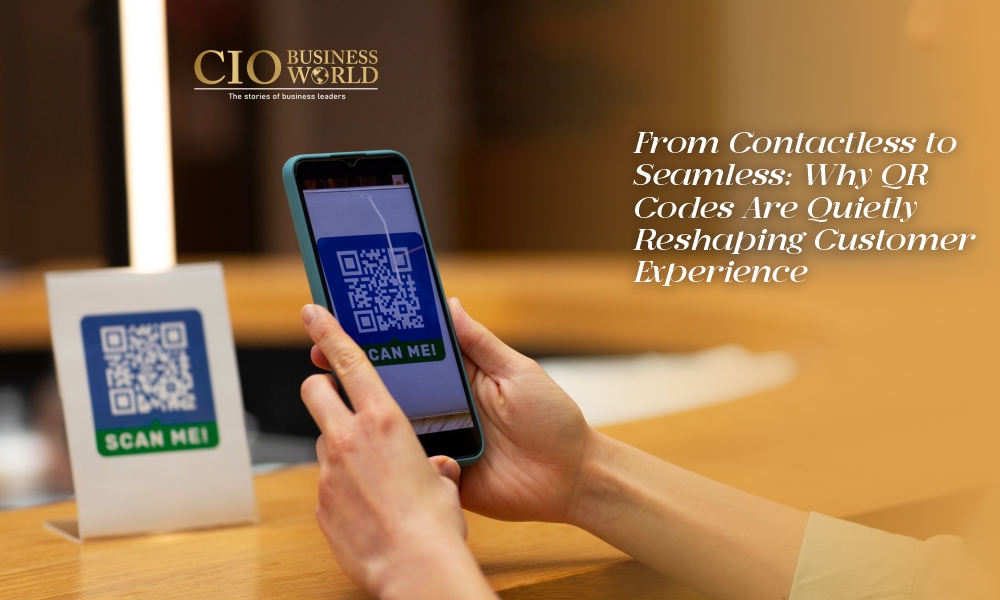Remember when QR codes were just a clever way to open a restaurant menu during the pandemic? Fast forward a few years and things have changed. Customers aren’t just looking for “contactless” anymore—they want effortless. They expect to scan, tap, and move on without waiting or guessing. For CIOs and digital leaders, that’s a big shift. It means rethinking how every interaction works, from the moment someone discovers your product to the instant they become a repeat customer.
Here’s the surprising part: the humble QR code, especially newer formats like the Multi-Link QR Code, is becoming one of the easiest ways to make that happen.
The leap from “no touch” to “no friction”
In 2020, QR codes were everywhere menus, airline check-ins, package tracking. Most of us thought it was a temporary fix. But customers got used to the convenience. Why type in a web address or download an app when one scan gets you straight to the point?
Now the bar has been raised. People don’t just want safe, they want smooth. They want to move from physical to digital without a hiccup. For CIOs, that’s both a challenge and an opportunity.
Why CIOs should care
Customer experience isn’t just a “marketing thing” anymore it’s tied to IT, data, and systems integration. Think about it:
- A retailer wants packaging that connects shoppers instantly to product info, reviews, or warranty registration.
- An event organizer needs check-ins, agendas, and networking all in one place.
- A hotel guest expects to scan one code and get WiFi, room service, and local tips.
These aren’t marketing gimmicks. They’re operational realities. And they land squarely in the CIO’s territory.
Multi–Link QR Codes: one scan, many doors
The old QR codes pointed to a single web page. Useful, but limited. A Multi-Link QR Code changes the game. It opens a small landing page where the customer chooses where to go next social channels, product catalogs, contact forms, or an app store download.
It sounds simple, but the impact is big. Instead of printing five different codes, you create one hub. For enterprises, that means less clutter, fewer mistakes, and the ability to adjust on the fly. You can run the same campaign globally but tailor the experience by market.
Real–world use cases
- Events: Attendees scan once, and they’re set agenda, tickets, even networking tools.
- Retail: A label on a shampoo bottle leads to ingredient details, a how-to video, and a loyalty program sign-up.
- Hospitality: Guests don’t just open the menu; they log into WiFi, book a spa treatment, or leave a review.
These aren’t futuristic scenarios. They’re already happening in industries that want to cut friction and boost engagement.
The hidden value: data
Let’s be honest convenience is great, but data is what CIOs really care about. Every scan tells you something: where it happened, when, and on what device. That’s real-world behavior data you can’t get from a website alone.
With a modern QR Code Generator, the destination can be updated without reprinting anything. That flexibility saves money and keeps the customer journey alive long after the campaign started. Over time, the scan data feeds back into strategy showing what resonates and where improvements are needed.
Why this matters now
The move from “contactless” to “seamless” isn’t a buzzword. It’s the next stage of customer expectation. The brands that win will be the ones that connect physical and digital without making customers think twice.
QR codes, of all things, are becoming the bridge. They’re cheap, universal, and increasingly smart. For CIOs, they represent a low-barrier, high-reward way to improve customer journeys without ripping apart existing systems.
Final thought
QR codes were never supposed to be glamorous. Yet here we are: they’re powering events, retail, healthcare, and enterprise communication. CIOs who ignore them risk missing an easy win. CIOs who embrace them especially advanced tools like Multi-Link QR Codes gain something bigger: the ability to deliver seamless, measurable, and scalable experiences at a time when customers demand nothing less.








